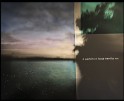Entering Competitions: more lessons learned
I have had the fortunate opportunity to co-curate several terrific exhibitions in Los Angeles recently and will soon be juroring SELF-SEARCHING: The Art of Self-Portraiture for the Vermont Photo Place. I thought I’d share some insights from both sides of the submission experience.
1. When you are submitting to a competition and the entry calls for 3-5 images at one price, and more at an additional price, just submit the 3-5. If the juror doesn’t like those initial images, they are probably not going to like the rest.
2. Try and submit images from the same body of work. In a recent show, those who had 2 images that related to each other, got two in the show. Those who sent a variety of images, got only one image. Jurors also like to see that you are exploring one idea in depth.
3. For this same reason, try submitting framed images that are the same size. If you keep your work consistently sized, you can swap out mats and frames and you can keep your framing costs down.
4. Be prepared. For another exhibition, I needed bios, statements, resumes, and image lists from all the participating photographers. I was shocked at how few had these pieces at the ready , and almost no one had branded themselves with a logo or an element that showed a sense of professionalism. For a number of photographers, I had to create these elements for them (because I believed in their work). I teach my students that when things come to you, it’s more often than not, overnight…you’ve got to turn your images and your promotional materials around at a moment’s notice.
5. Learn how to resize your jpgs correctly.
6. Follow instructions to the letter–this simple fact will cause for photographers to be eliminated.
7. If you are tightening the purse strings, try submitting to ezines, blogs, or magazines. It keeps your name in the public and there are usually only small fees (if any) involved and no shipping costs and more importantly, you will have something tangible to use to showcase your work. Here are some good sources to find publications (“Sites to Explore” on Lenscratch has many also):
http://www.art-support.com/magazines.htm
http://www.photolinks.com/Photography_Ezines.html
8. Take the time to thank the curator/gallery/ezine/magazine/ blogger for the opportunity you have been given. Emerging photographers forget how much time and effort go into these efforts, usually for small financial reward. This holds true for portfolio reviews too. When I reviewed for Review LA earlier this year, I handed each reviewee a guideline of how to handle a portfolio review and the #1 point was to thank the organization AND the reviewer for their time and energies. I was surprised at how few photographers followed through on this.
9. Contining on this idea, I’ve spoken to many photographers that will tell me 3-6 months after a review that they still haven’t followed up with things. Life goes on and reviewers are busy people, and the enthusiasm they have for your work at the time will wane, especially when they see that you are not a follow-up kind of person. Imagine a gallerist who is interested in you and your work, and you don’t follow up until much later–how does that reflect on your ability to create an exhibition and be someone they can depend on.
10. Remember if you miss a major competition, it will come around next year. Pace yourself and be realistic. You can’t submit to everything or you’ll go broke. It’s not just the price of submission, but the cost of printing, framing, and shipping.
11. Do some research on the juror…look at the exhibitions they have created or the kind of work they showcase. If you think they would find your work of interest or if they are someone you want to expose your work to, then submit. Even if you don’t get in the show, you will be on their radar. A couple of years ago, I didn’t get into an exhibition. Months later I saw the juror at a portfolio review and I was gracious and friendly. He told me how badly he felt, and then hen a few months later, offered me a solo show. You never know.
One of my students didn’t make the cut for Critical Mass, yet was still contacted by a gallery that loved her work and she was offered a show.
12. Learn how to write about your work. As a blogger, I need some insight into your work, so I can write about it. Photographers often feel that the images should speak for themselves. Honestly, some do and some don’t. Even a few sentences is a big help.
13. There is something to be learned from rejection. Take a look at the realized exhibition and try to understand why the juror made those choices, and where your work stands in comparision.
14. Support your community. Many of these calls for entries keep galleries and organizations afloat…you don’t have to submit to everything, but consider who you want to support.
15. Good luck…remember Luck is preparation meeting opportunity.
Posts on Lenscratch may not be reproduced without the permission of the Lenscratch staff and the photographer.
Recommended
-
2023 in the Rear View MirrorDecember 31st, 2023
-
The 2023 Lenscratch Staff Favorite ThingsDecember 30th, 2023
-
Inner Vision: Photography by Blind Artists: The Heart of Photography by Douglas McCullohDecember 17th, 2023
-
Black Women Photographers : Community At The CoreNovember 16th, 2023




















































